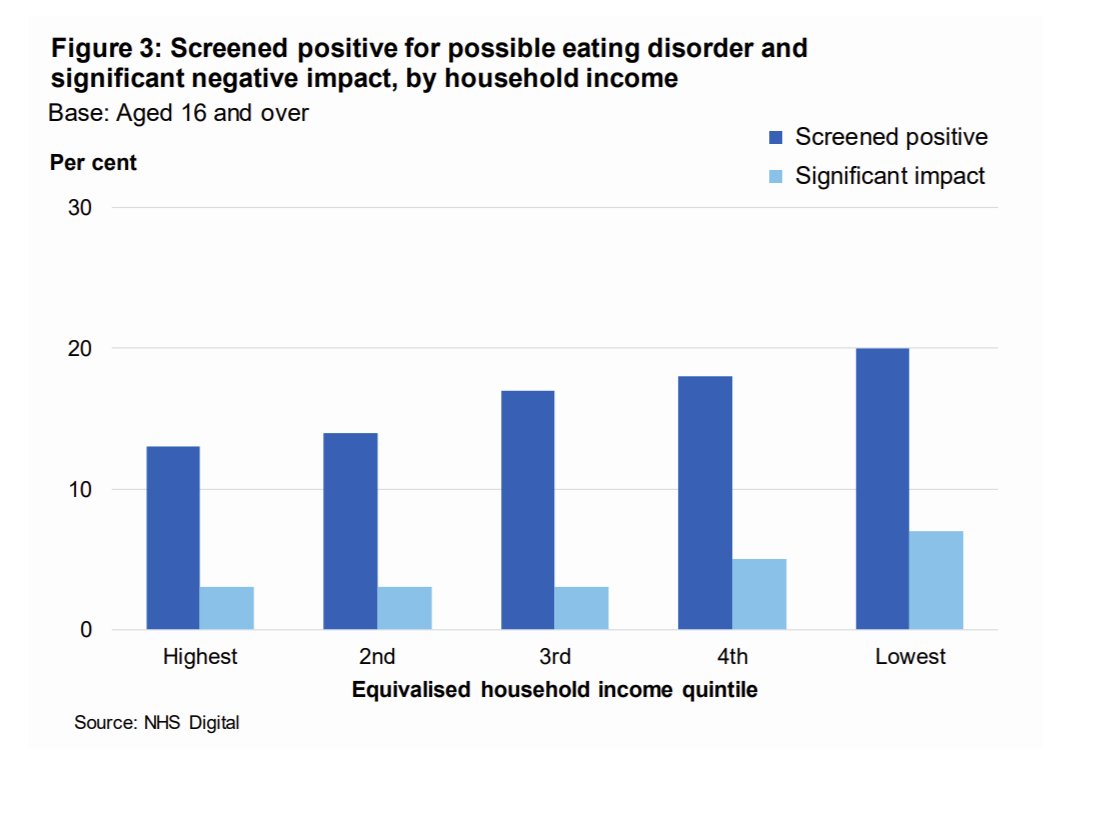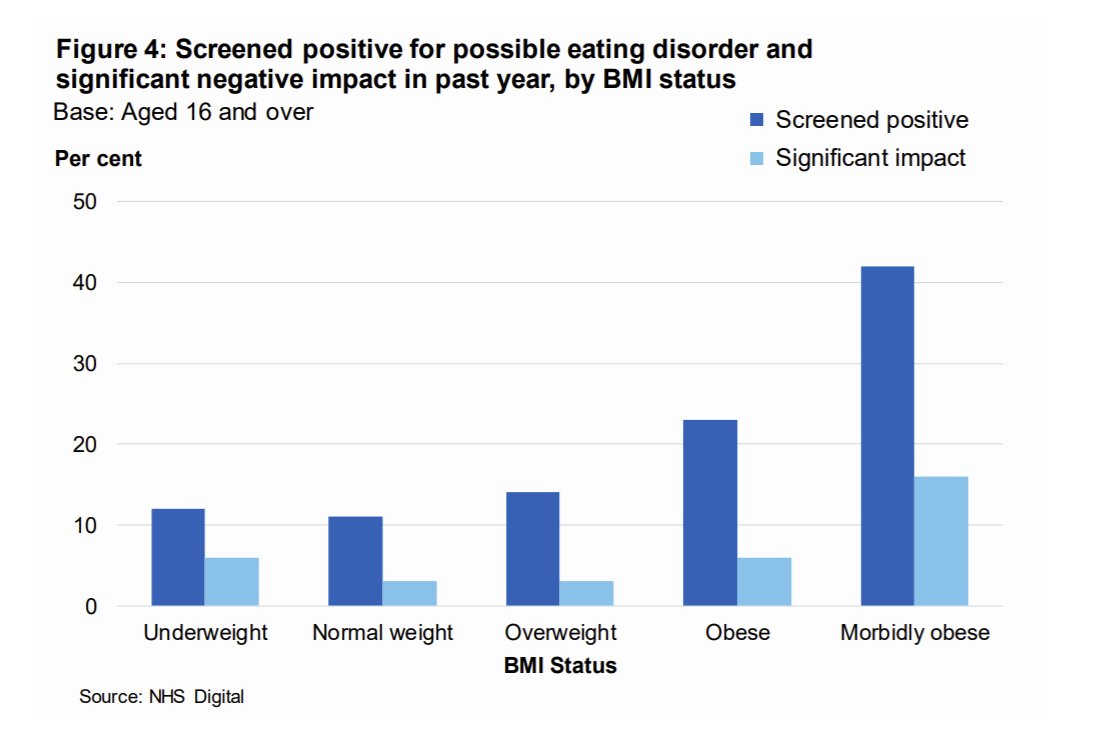New HSE data finds 16% of 16+ years old report disordered eating behaviours. In comparison 2007 APMS found this prevalence to be 6% and our study using 2008-10 SELCoH data in London found it to be 10%. https://files.digital.nhs.uk/30/533217/HSE19-Eating-disorders-rep.pdf
Disordered eating is more common in more deprived households, but when we look at people using services eating disorders are more common in more affluent areas.
disordered eating is also more common in those with higher BMI. However, treatment access is often decided based on BMI which is also reflected in how we define eating disorders in research.
to me this means that a lot of our research only tells us something about a specific sub-group of people with eating disorders. Therefore we really need to: 1) be cautious when we interpret results; 2) do better in terms of representation. Definitions matter.

 Read on Twitter
Read on Twitter



